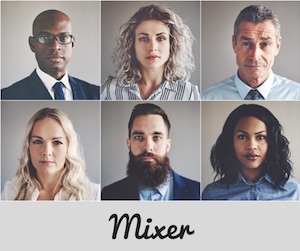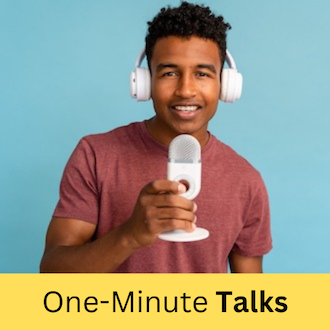Urban Plannning
Shifani talks about how to make cities more efficient places to live.
Todd: So, Shifani, you are an expert in urban planning, and more specifically, in transport. What do you envision in the future, let's say, in fifty years from now?
Shifani: Fifty years from now is quite a long time to project, but future cities would be green cities, cities that are able to sustain themselves. They can produce their own energy. They've got transport mode choices, so people can choose whether they want to walk or cycle or bus. A city that has a very well connected public transport system. So, if you want to get from A to B, you have three main choices - public transport, walking, cycling - each equally good.
Todd: So basically, you see a future of increased urbanization.
Shifani: Increased urbanization, yes, because people are moving to the cities. That's what the figures say. It's what's happening. It's the current trend. And if this continues, the cities need to become more robust. They need to become more resilient. I know these are big words, but what I mean by that is that cities that are able to change with the times. If people are going to become more mobile, then we need a city with good transport system.
But in the future, there's a possibility that people won't be traveling so much, simply because the internet is taking over. Our social space is being invaded by the internet. And so, if people aren't going out so much, we'd want cities with comfortable housings, comfortable buildings, heating, cooling - nicer places to be.
Todd: So, in the future, if there are more cities or more densely populated cities, do you see any changes in public transportation?
Shifani: Well, the theory states that the more density you have, the more feasible public transport becomes. That's absolutely true. So, in saying that cities are going to become more densely populated and urbanized, public transport definitely has a future.
I mean, if you think of a city like Beijing, for example, public transport is available. People travel by it. Why? Because it's available. It has to be available, because there's such a vast number of people. But if you think about a city like Auckland, where I'm from, our public transport system is not very good, because we're not densely populated, and it doesn't make sense to put a bus where there aren't people.
But then, the counter argument is, if you put a bus, people would take it. So, it's the 'chicken and egg.' What comes first? Do you put a bus on a route where there aren't people or where the people aren't taking the bus? Or do you do it the other way around?
Todd: Hm, interesting. And of the types of public transport - buses and mainly rail or subways - which do you see will have a greater impact in the future?
Shifani: I think it all depends on where you are, but trains will definitely be the way of the future. Trains and buses combined, I think, because people like traveling long distances in the shortest amount of time possible. Trains are your solution for that. But for shorter journeys, obviously, connecting different train stations or connecting homes to the train stations, you are going to need buses. One can't really function without the other.
Todd: So, maybe one of your biggest challenges is going to be getting people to give up their 'love affair' with cars?
Shifani: Oh, that's always difficult. Trying to tell a car enthusiast that he should not drive his car ever again will become their worst nightmare. It's not something that's easily achievable. I myself am guilty of that. I used to have a Turbo Nissan Sylvia when I was growing up, in my teenage years. And if someone told me not to drive my car, I think I would be very mad. So yes, it's quite a barrier that I have to go through.
Todd: Well, good luck.
Shifani: Thank you. I'm going to need it.
envision

What do you envision in the future?
When we envision something, that means we predict or imagine what will happen in the future. Notice the following:
- With the new rail system, I envision a reduced traffic problem.
- It's difficult to envision how the city will change in the next 20 years.
green city

Future cities would be green.
A green city has a lot of trees, plants, parks, etc. Notice the following:
- New York is not exactly a green city, but it does have Central Park.
- What can we do to make our city greener?
change with the times

Cities need to change with the
times.
To change with the times means to be flexible. Notice the following:
- The city is slowly changing with the times.
- It's difficult for older people to change with the times.
urbanized

Cities are going to become more urbanized.
When a city is urbanized, that means lots of people live in the center of the city. Notice the following:
- New York is very urbanized, for many people walk to their jobs downtown.
- Houston is not urbanized, as people usually commute to the city by car.
enthusiast

Trying to tell a car enthusiast that he should not drive his car is not easy.
An enthusiast is someone who loves something very much. They are enthusiastic about ita. Notice the following:
- I am a bicycle enthusiast.
- She is an opera enthusiast.
Vocabulary Quiz
enthusiast • urbanized


















